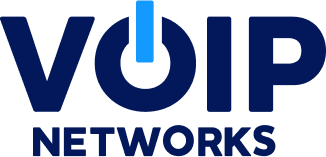With 911 compliance becoming stricter and more critical than ever, choosing the right infrastructure provider offers the easiest path to avoiding issues and penalties.
It’s helpful to understand how 911 emergency services have evolved and how the industry is changing now.
The 411 on 911
When 911 service began 55 years ago, the goal was to quickly connect anyone in need with emergency services. In the era of landlines, identifying where a call was coming from was simple. The technology of the time could easily and quickly associate a phone number with a physical location.
Now, with widespread use of cloud-based services, softphones on laptops, and mobile phones, pinpointing locations isn’t always so simple. The murder of a woman in a motel by her estranged husband and the actions of an FCC consultant have changed everything. Those changes are encapsulated in two industry requirements—Kari’s Law and Ray Baum’s Act, collectively known as E911.
Kari’s Law and Ray Baum’s Act
The catalyst for Kari’s Law was the death of Kari Lake. In 2013, her nine-year-old daughter tried to save her mother’s life by repeatedly dialing 911. Unfortunately, because the motel where they were hiding required dialing “9” for an outside line, the call never went through.
In response, Congress passed Kari’s Law, which requires direct 911 dialing and notification capabilities in multi-line telephone systems (MLTS). Whether on-premises or cloud-based, these are typically found in office buildings, campuses, and hotels.
Businesses that don’t comply may be fined up to $10,000 by the Federal Communications Commission (FCC), in addition to daily fines and other penalties for every day a system is non-compliant.
The late Ray Baum, who was a politician and, later, a consultant and lobbyist, was the catalyst for the act that bears his name. That act extended the requirements of Kari’s Law to state that not only must 911 be directly accessible, but calls to 911 must also provide a dispatchable location. The FCC defines a dispatchable location as one that includes such details as building number, floor, suite, room, and other relevant location information to assist first responders.
The penalties for non-compliance are similar to Kari’s Law, and organizations face additional liabilities if something happens to their employees because their system doesn’t comply with these laws.
E911 Compliance Through Infrastructure
With E911 requirements in effect, even organizations with on-premises telecommunications systems need to take extra steps for compliance. Telecom service providers handle 911 services; however, on-premises Unified Communications systems require third-party organizations like Intrado or RedSky Technologies for full E911 compliance. This additional requirement further complicates the decision of whether to upgrade legacy communications equipment or to migrate to an approved E911-compliant Infrastructure as a Service (IaaS) provider.
For Mitel users, migrating to a managed private-cloud solution with Cloud9 Infrastructure—either hybrid cloud or purely cloud-based—ensures seamless E911 compliance. Other IaaS providers, such as Microsoft Azure, Google Cloud Services, Amazon Web Services, etc., only provide rack space and server resources. Companies still need to contract with additional vendors, including billing providers, firms that calculate regulatory fees/taxes, and local/long-distance carriers, as well as E911 service providers.
Cloud9 Infrastructure offers an end-to-end, turnkey solution that increases the value you bring to clients with Mitel MiVoice Business (MiVB) licenses. As an exclusive Mitel partner, a Mitel Platinum Partner, and a Mitel-authorized and -endorsed IaaS provider, we can provide the infrastructure and services you and your clients need, helping them stay 100% E911 compliant. And we back it all with white-glove service and 100% U.S.-based support.
To learn more, please contact us by calling 800.947.0007, emailing sales@cloud9infrastructure.com, or visiting cloud9infrastructure.com.
Mitel PowerUp News (Product Portfolio Updates)
How To Choose The Right Infrastructure Provider
Channel partners have several options when choosing the right Infrastructure as a Service (IaaS) provider. Learn what to look for when evaluating IaaS solutions.






